Corpus Christi in Granada and La Tarasca parade
Corpus Christi is the most significant celebration within Granada’s festive calendar, as the city main fair is held around this festival. The celebration lasts for a week, although the main day is the Thursday following the eighth Sunday after Easter Sunday.
Numerous activities take place during these days: painting exhibitions, balcony and shop window competitions, parades, concerts, plays, bullfights, flamenco performances, etc. Among the most outstanding activities are the exhibition of carocas (paintings bearing funny or picaresque scenes) and quintillas (five-lined stanzas of a critical nature) in Bib-Rambla square, a tradition that dates back to the 17th century. The parade of the Tarasca and the procession of the Monstrance of the Blessed Sacrament visiting the altars erected by the brotherhoods are the most outstanding celebrations.
On Thursday, the central day of Granada fair, the most important festive ritual of the city takes place: the commemoration of Corpus Christi. The ritual begins with the celebration of a mass in the cathedral in the morning. The civil and military authorities enter through the royal chapel to the cathedral to join the procession just behind the Monstrance of the Blessed Sacrament. Meanwhile, a large number of spectators gather in the Plaza de las Pasiegas, awaiting for this moment with great emotion, as the Monstrance is one of the identifying symbols of the Christian faith.
As the procession passes under the balconies, rose petals are thrown at it, while a choir performs religious songs. The procession is followed by the civil and military authorities, as well as the municipal music band. Throughout the procession route, the Monstrance makes stopovers in front of the altars for the prelate to bless them. The procession ends with the monstrance returning to the cathedral.
On Wednesday during the fair week, the Tarasca parade gets through the streets around the city centre, and becomes one of the most traditional rituals of the Corpus Christi’s festival. It is a parade in which the figure of the Tarasca stands out, consisting of a dragon-shaped beast carrying a mannequin representing a woman, which is dressed every year by a different designer, and which it is supposed it will set the summer fashion trend. The parade of the Tarasca, also known as the “Pública” (Public) of the Fest starts on Wednesday morning. The festivities begin with the exhibition of the mannequin in front of the town hall. This is one of the most eagerly awaited moments for the people of Granada, as the design worn by the mannequin is a mystery and it is only at this moment that it is disclosed. The Municipal Music Band performs a concert of popular music and afterwards the Tarasca parade begins through the city centre. The Tarasca is accompanied by “giants” and cabezudos (big-heads). The giants represent the Catholic Monarchs, Isabella and Ferdinand, and the kings of the Nasrid dynasty, Boabdil and Moraima, all of whom played a crucial role in the development of the city history. The cabezudos or ancient diablillos (little devils), are people carrying papier-mâché big heads on their shoulders while causing a great hullabaloo. They represent popular historical types of grotesque character. Throughout the parade there are also dance groups that animate the audience, as well as the different charanga bands that take part in the event.
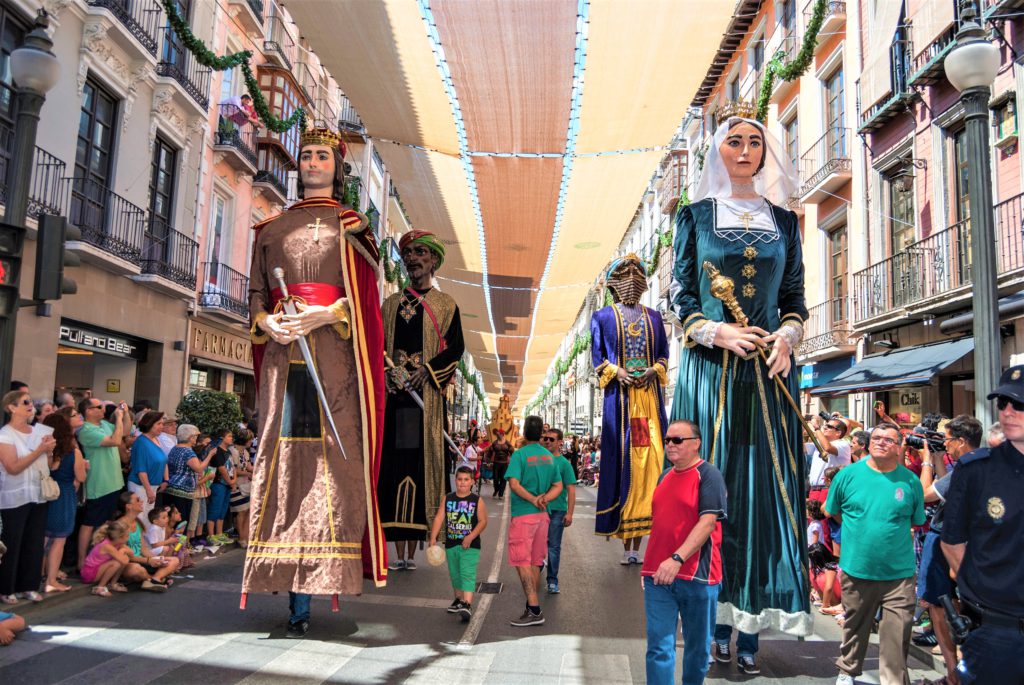
Desfile de gigantes y cabezudos. Photo: Ana Belén García Muñoz. © Instituto Andaluz del Patrimonio Histórico
IAPH image under the conditions established under license cc-by 3.0 de Creative Common. https://creativecommons.org/licenses/by/3.0/es/
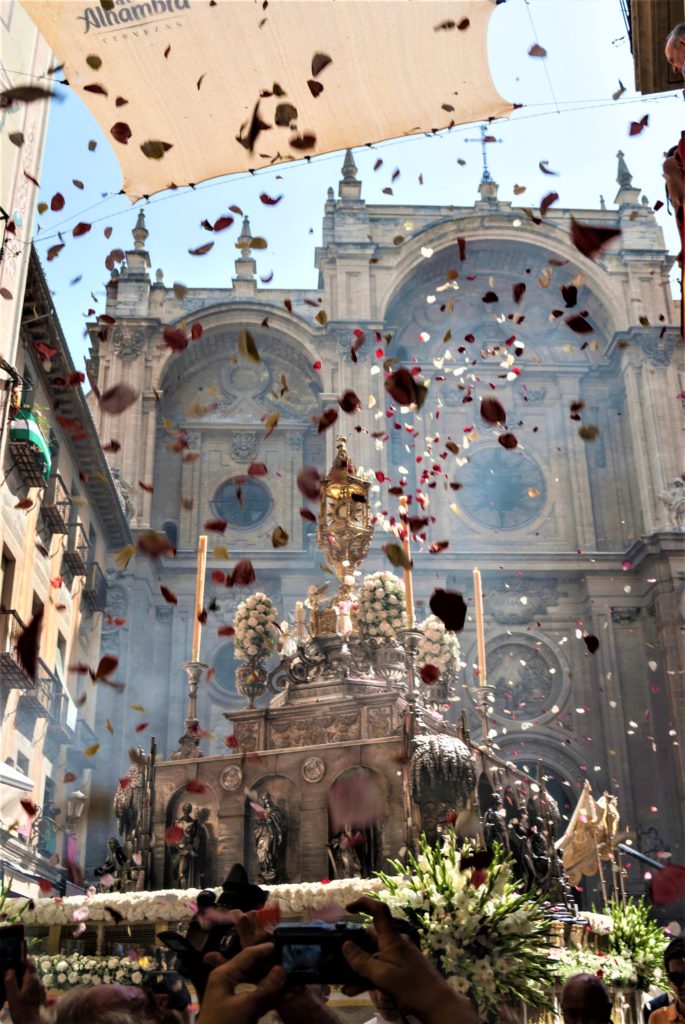
Desfile de la custodia del Corpus Christi. Photo: Ana Belén García Muñoz. © Instituto Andaluz del Patrimonio Histórico
IAPH image under the conditions established under license cc-by 3.0 de Creative Common. https://creativecommons.org/licenses/by/3.0/es/
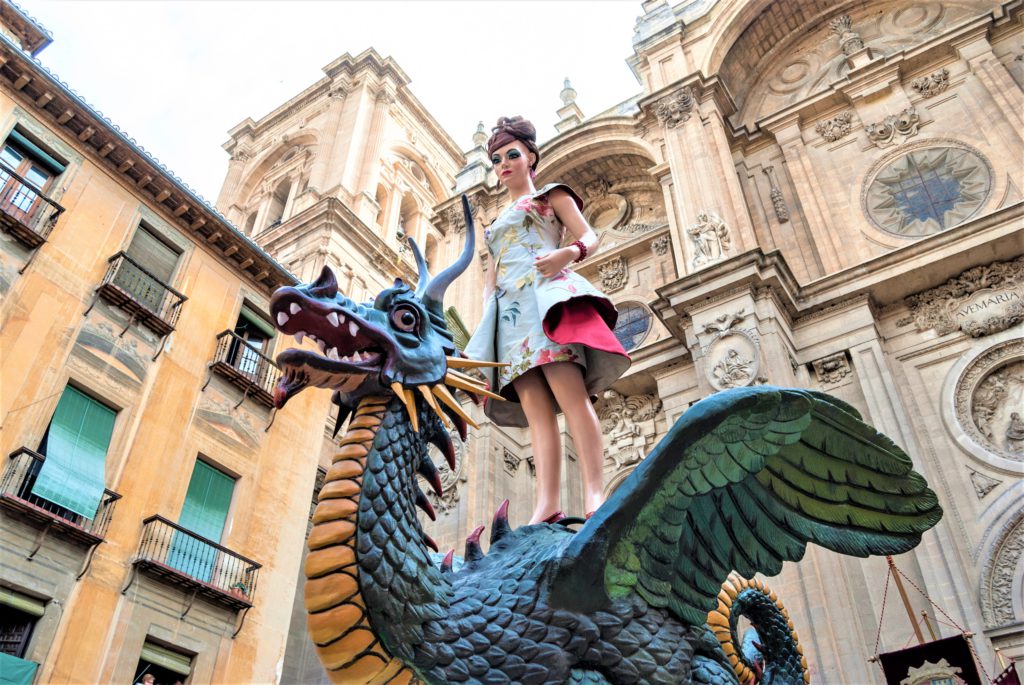
Desfile de la Tarasca en el Corpus Christi. Photo: Ana Belén García Muñoz. © Instituto Andaluz del Patrimonio Histórico
IAPH image under the conditions established under license cc-by 3.0 de Creative Common. https://creativecommons.org/licenses/by/3.0/es/
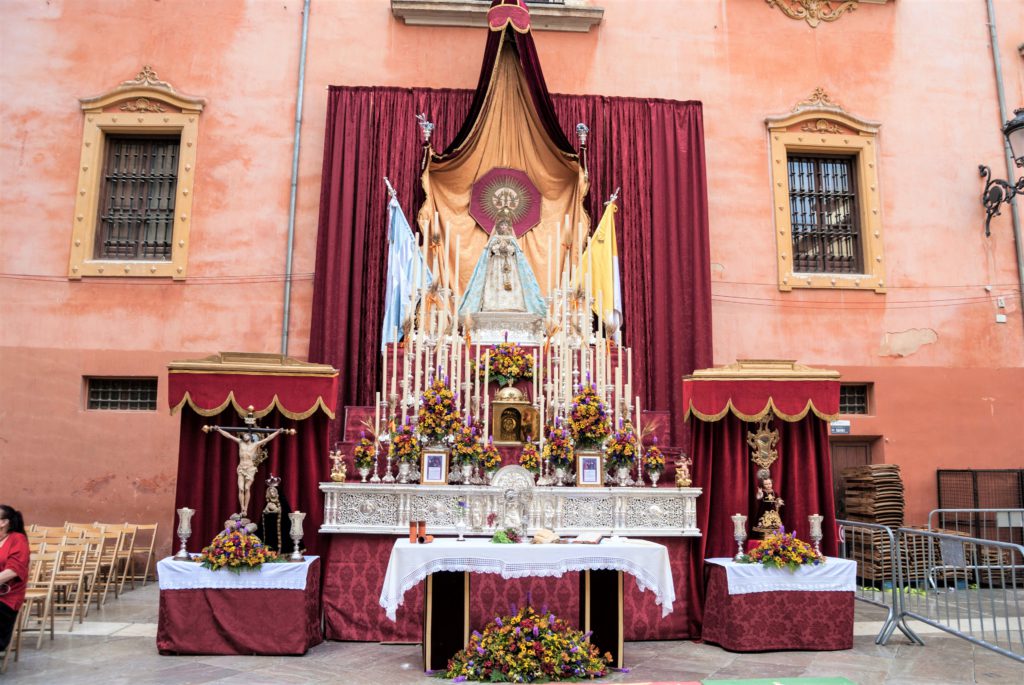
Altar del Corpus Christi. Photo: Ana Belén García Muñoz. © Instituto Andaluz del Patrimonio Histórico
IAPH image under the conditions established under license cc-by 3.0 de Creative Common. https://creativecommons.org/licenses/by/3.0/es/
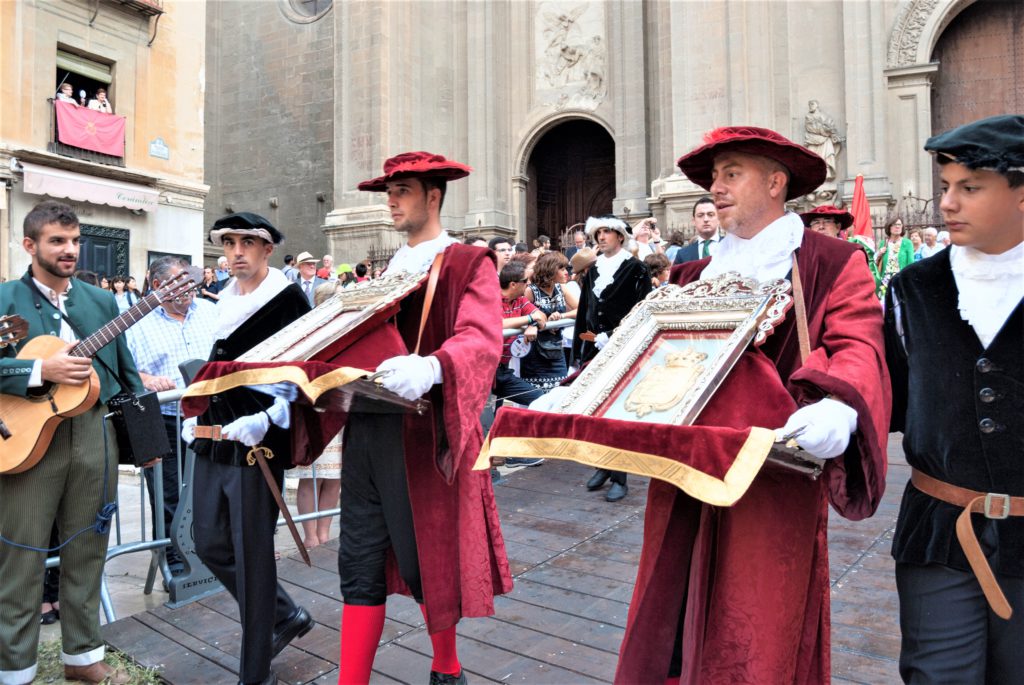
Desfile de reliquias. Photo: Ana Belén García Muñoz. © Instituto Andaluz del Patrimonio Histórico
IAPH image under the conditions established under license cc-by 3.0 de Creative Common. https://creativecommons.org/licenses/by/3.0/es/
Ahora Granada. (2022). Procesión del Corpus de Granada 2022. [Video File].

